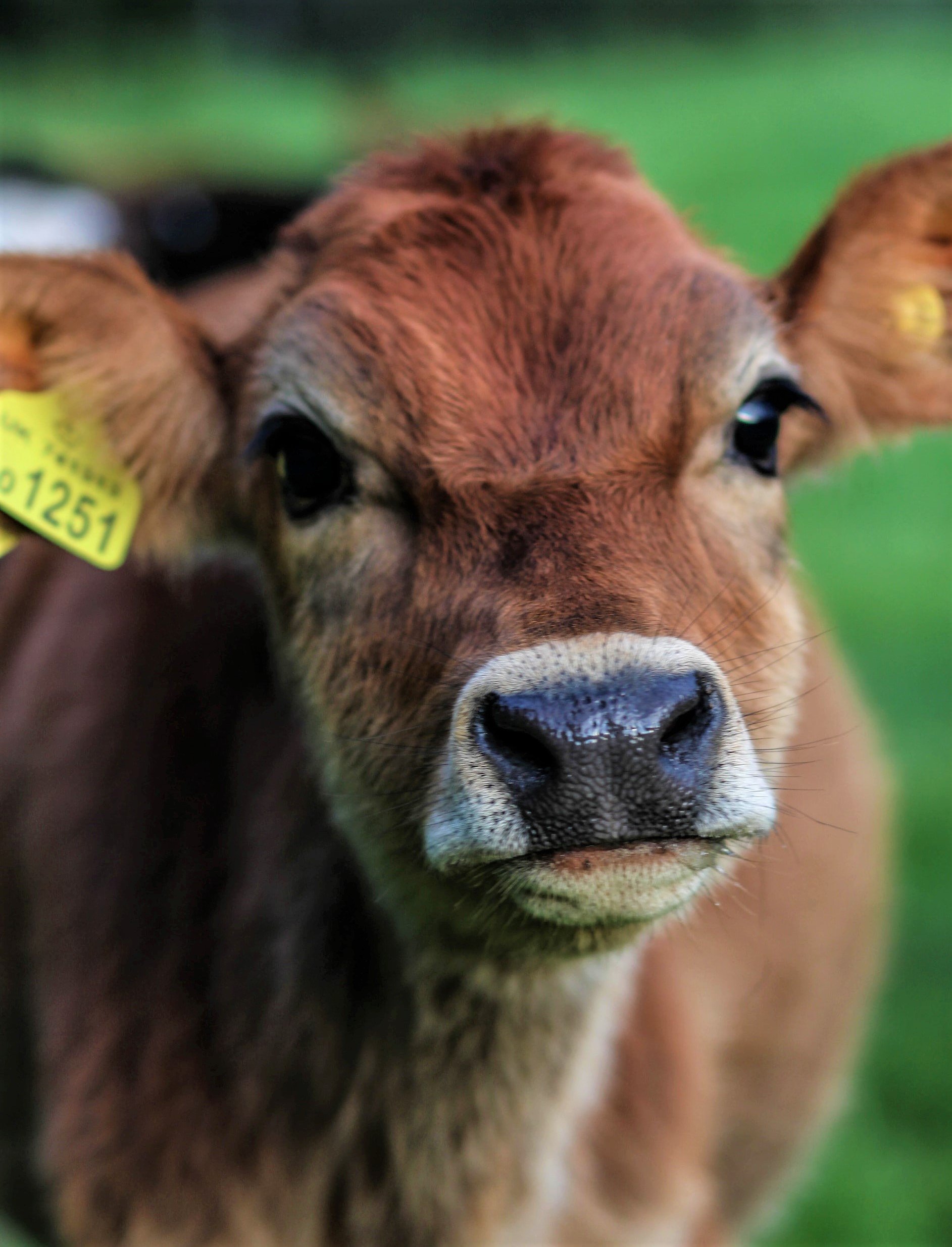By Jessica Scott-Reid
Jessica is a Canadian writer, animal advocate and plant-based food expert. Her work appears regularly in media across Canada and the US.
For anyone up on current fashion trends, it has become increasingly apparent that real fur fashions are out, while faux fur or simply no fur is in. Animal activists have over the past decade or more, been instrumental in instigating a cultural shift, slowly turning popular opinion against real fur fashion by highlighting the cruel nature of its production, and in recent years also its ecological harms. Top designers continue to drop real fur—the same however, cannot be said for leather.
Leather too is a product resulting in animal cruelty and eco-harm yet it has not seen near the cultural condemnation of fur. There are several reasons why. A recent report details the multiple negative impacts of leather production, calls out industry greenwashing tactics—such as “it’s just a harmless by-product”—and showcases the non-animal leather alternatives that are changing the industry.
The report corrects common fallacies about leather being a harmless, eco-friendly by-product of meat production
Under their skin: Leather's impact on the planet, is the latest report in a series that dives deep into the impact of leather production on animals, people and the planet. It hopes to educate more conscious consumers and fashion industry leaders, and inspire a similar passion for boycotting but this time for leather. It is co-authored by Emma Hakansson, founding director of Collective Fashion Justice, Nicholas Carter, ecologist and co-founder of PlantBasedData.org, along with Lucy Coen and Natalie LaBarbera.
It offers evidence that corrects common fallacies about leather being a harmless, eco-friendly by-product of meat production, instead highlighting it as a co-product that actually props up cruel and eco-damaging meat production, and that brings in substantial revenue all its own.
“The myth of leather as a ‘by-product’ rather than the profitable co-product it really is, also makes many designers and people believe their use of the skins of cattle and other animals is not problematic,” Hakansson explains in an interview with PFN. “In reality, designing with and purchasing leather helps to fund cattle slaughter and exploitation, the climate crisis and biodiversity destruction, as well as human harms, in many cases.”
And although leather—especially in industry marketing designed to compete against leather alternatives—is often touted as being all-natural and biodegradable, this too is inaccurate. The process of tanning leathers to make them viable for use in fashion is done for the very purpose of preventing rotting. “Many brands refer to 'natural' or vegetable tanned leather as sustainable due to its supposed ability to fully biodegrade, potentially misleading consumers interested in making more sustainable choices,” notes the report. “However, findings published in Tannery Magazine showed that chrome tanned, metal-free and vegetable tanned leathers all failed to meet the biodegradation rates required to be considered effectively biodegradable, even under controlled conditions.”
The report examines the evidence behind the vague, unregulated and misleading labels that the leather industry uses to greenwash their products.
“What’s more,” adds Hakansson, “current labelling laws across large parts of the world, including in major fashion markets, allow for leather to be coated in plastic without this being noted on a product label, so long as the percentage of plastic stays within a certain boundary.”
Also, Hakansson says the leather industry is spending significant funds on “spouting disinformation which claims that methane released from the industry is not harmful to the planet, among other misleading claims,” and believes the public needs to understand the true impact of the leather industry on the planet, as well as the greenwashing being employed to keep that from consumers. “It’s important people understand how to see past the same kind of dangerous marketing tactics that BP used to deny the impact fossil fuels has on the climate, being used again today by the leather and cattle industry,” she adds.
'Regenerative leather' is not a climate solution. The fashion industry needs to prioritize the use of next-gen leather alternatives which are land efficient and genuinely broadly sustainable.
— Collective Fashion Justice
There is still hope, though, says Hakansson, if consumers shift away from leather and other animal-based products. “The data that shows us how the climate and biodiversity could be protected in a shift beyond this animal-based production is incredibly promising,” she says. “The potential to rewild a few billion hectares of land, to sequester 99% of our carbon emissions budget to 1.5C (at a minimum) if this shift occurred by 2050—these numbers are worth spurring us into action through hope for a better future world.”
Also recently featured in the documentary Slay—which exposes the use and abuse of animals in fashion, as well as the impact of that use upon the planet and people—Hakansson says it was important for her organization to work on this report series focused on leather specifically, "because there was not yet a report or document which looked at all of the different considerations—emissions, biodiversity, water waste and eutrophication, tannery and farm stages, land clearing, chemistry use, etc.,—with a high level of academic rigour.”
She adds that the report series is an important tool for engaging with the fashion industry, "which needs to understand why use of sustainable leather alternatives is critical to work for what I call a ’total ethics fashion system’—one which puts people, our fellow animals and the planet we share before profit."
Examples of alternative leather products, l to r: “mycelium leather” made from the roots of fungi; “apple leather” made from the skins, seeds and cores of apples; and “cork leather” made from the bark of cork trees which can be harvested without the tree being cut down. Source: Collective Fashion Justice
Collective Fashion Justice lists a number of sustainable leather alternatives on its website, including those made from pineapple leaves, cactus, apples, cork, mycelium fungi, discarded mangos, natural rubber, recycled polyurethane and more.
Hakansson believes animal-based leather continues to fly under the radar of public scrutiny compared to fur because “it’s easier for us to recognise fur as something which comes from an animal who has been slaughtered—visually, it looks like an animal. Leather is so chemically processed, the hairs removed from the skin, the skin processed and altered beyond recognition, so that connection is harder to make.”
For conscious consumers, Hakansson advises that the best course of action is to first buy less and buy second-hand. “Most of us buy far more than we need,” she says. “And we can support total ethics brands using materials which are not made from animals, and which also support a move beyond the use of fossil fuels in fashion. If the planet and those who live on it are important to us, avoiding animal-derived leather only makes sense."










